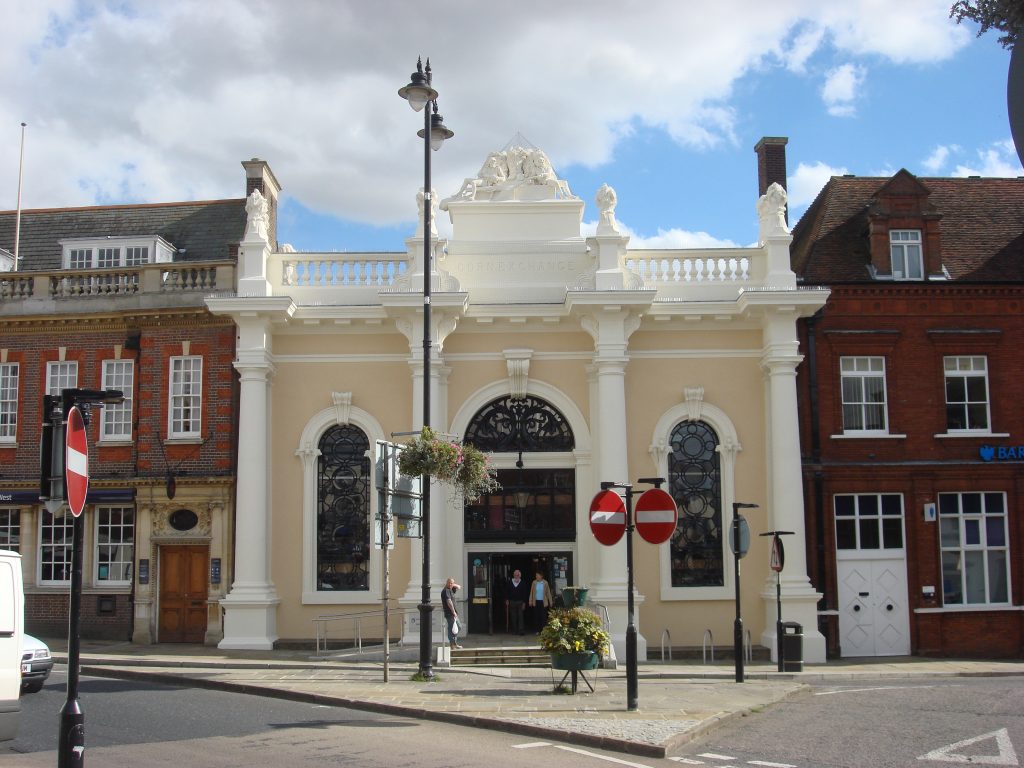Sudbury is an old market town located on the Stour River in a preserve for natural wonders. Its origin dates back to the Saxons and its long history in the silk and weaving industries. The neighbouring towns, including Lavenham, were prospering during the late Middle Ages thanks to the wool trade, which is why this work was of great importance to the area. The wealthy past of Sudbury can be partly explained by its location near the River Stour, which allowed for wool exports, and near London and Colchester, which allowed for domestic transport. There are excellent road and rail links between Sudbury and Colchester, allowing for ease of travel to and from the UK.
A potted history of Sudbury and the Silk connection
As a result of the 1572 religious persecution of the Huguenots, which were French weavers, they were evacuated to England. The silk weavers originally settled in Spitalfields, East London, but they soon discovered that they could earn more money in East Anglia, where water was plentiful, ports were accessible, lease prices were low, and there was an ample supply of cheap labour within easy reach of London.
By 1714, silk production had relocated to Sudbury, Nayland, Hadleigh, and parts of Essex, where George Courtauld lived. In 1903, Reginald Warner founded the Gainsborough Silk Weaving Company, which is still operating in Sudbury today.

The beauty of Sudbury’s natural surroundings is also well known. Thomas Gainsborough was born here and drew inspiration from the surrounding countryside. St. Peter’s Church is behind the statue at the top of the article, which is located in Sudbury’s market square. His home has been converted into a museum and art gallery, and it is open to the public. The exhibits present many of Gainsborough’s paintings, plus those of other noteworthy artists.

Constable was inspired by the area’s local environment. The River Stour is prominent in his work, and the meadows are excellent places for visitors to experience the setting. Those seeking to enjoy the countryside may want to visit the Croft. Children will love feeding the ducks and swans as they wade through the green lawn and join the river.
Click on the link for more information on Gainsborough and Constable.

The architecture of Sudbury is a traditional blend of Georgian manor houses, Victorian terrace houses, and timber-framed halls from the Middle Ages. Even Queen Anne’s periods are represented. Five superb medieval churches still stand, as do a range of 13th-century timber-framed cloth merchants’ houses and three-storey 19th-century silk weavers’ cottages.

There are many stores to choose from in the town, and North Street is particularly popular. If you recognise certain streets, you may have seen them in one of the many TV shows filmed here. ‘Lovejoy’ is without a doubt the most renowned series. While walking past St Peter’s Church, keep an eye out for the drinking trough beside the structure. This is where ‘101 Dalmatians’ is said to have stopped for a drink whilst fleeing Cruella De Ville through Suffolk.
Belle Vue Park is a wonderful location to relax and observe the world go by. You can find lovely grass and flower displays, in addition to animals and aviaries.
The Quay Theatre is an important part of Sudbury’s entertainment offerings, and you can see a variety of plays and movies there throughout the year. You can also attend regular concerts at St. Peter’s Church.

